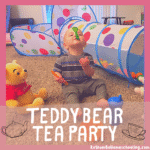
I first started seriously mapping out my homeschool curriculum when I was 5 months pregnant. By the time I gave birth, I had weekly lesson plans and activities written up through kindergarten. (Best laid plans… he was a completely different type of learner than what I had planned for!)
Of course, like many starting out with homeschooling, I first read up on different homeschooling philosophies and schools of thought. I wanted to ensure that whatever activities I planned were in line with my ultimate goals and vision for my son.
I journaled about my ideal homeschooling philosophy. It was mostly based on unschooling (child-directed learning where kids can learn about what their passionate about at the moment, and the parent is a facilitator who provides the resources and environment for kids to explore their natural interests and curiosities about the world). I also resonated with the Waldorf philosophy—especially the idea that learning should come through fun activities and experiences (particularly ones out in the real world) rather than from textbooks or lectures. My son and I “do science” on nature walks and with fun experiments that he sees as play rather than learning. From Montessori, I incorporated the idea of “Practical Life Studies” into my overall homeschool vision. ‘Eating with a fork,’ ‘dialing 911,’ ‘sneezing into your elbow,’ and ‘putting on shoes by yourself’ are learning objectives just as important as ‘count to 10’ and ‘know all the colors and shapes.’
What shocked me the most when I shifted from envisioning my homeschool philosophy to actually mapping out the activities I wanted to do to get there is how few homeschool websites included anything related to social and emotional learning. Categories on the top bar of the site were always “ABCs, math, reading, writing, science, art,” but there was never anything like ’emotions’ or ‘SEL’ (social-emotional learning; what it’s called by early childhood educators and researchers). In my original plan, this was a whole class where I would teach about things like friendship, social justice, taking care of people and animals, how to name your emotions, and how to communicate about what’s going on in your heart.
I was always appreciative when I found the rare homeschool mama who posted even 2-3 activities or printables related to social and emotional learning. I bought the amazing All About Me Theme Pack from The Measured Mom because it has such cute resources for teaching emotions.
But most of what I’ve designed for my SEL class (or as my son and I call it, “Love” class), I came up with myself and am still coming up with. They’re usually simple ideas for play that teaches empathy, sharing, and taking care of others.
I will always believe that teaching kids to develop their emotional intelligence—meaning their empathy, their ability to recognize their own emotions and those of others, and their ability to manage their emotions and adapt to different environments—is the most important learning objective before starting grade school and throughout childhood. Children will learn the other subjects one way or the other, but many people never develop emotional intelligence. Teaching these skills early and often is the best way to make sure that your kiddos grow up to be the empathetic, adaptive, and loving people we need in this world!
What ways do you teach your children “Love” class? Why do you think so few homeschool blogs include resources for teaching social and emotional learning? Comment and let me know what you think!



